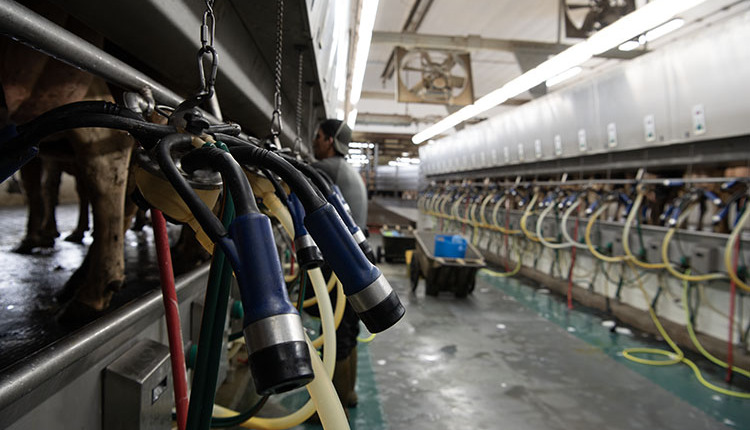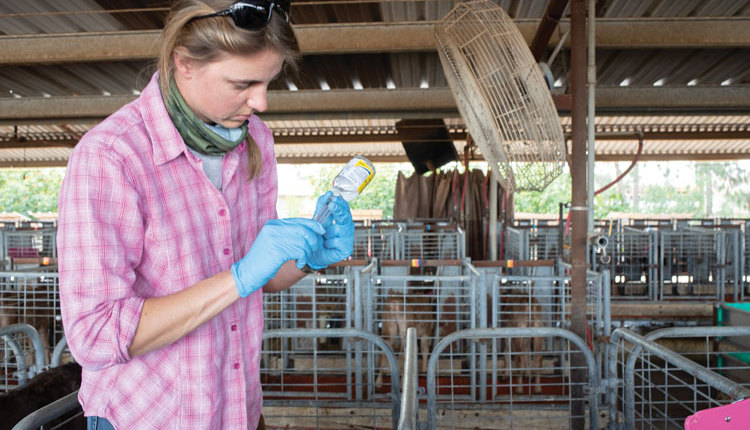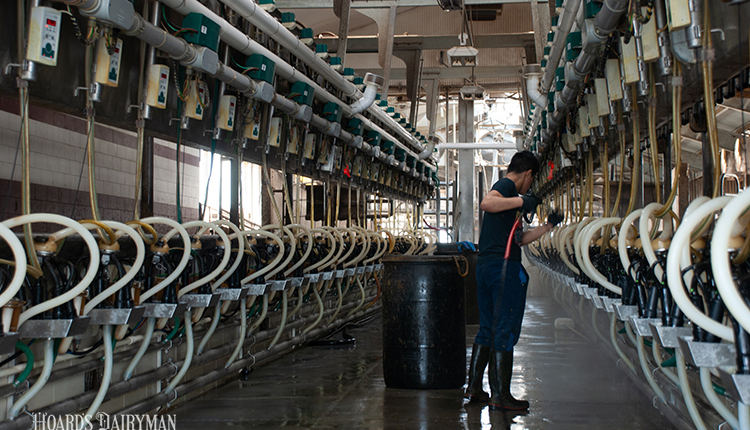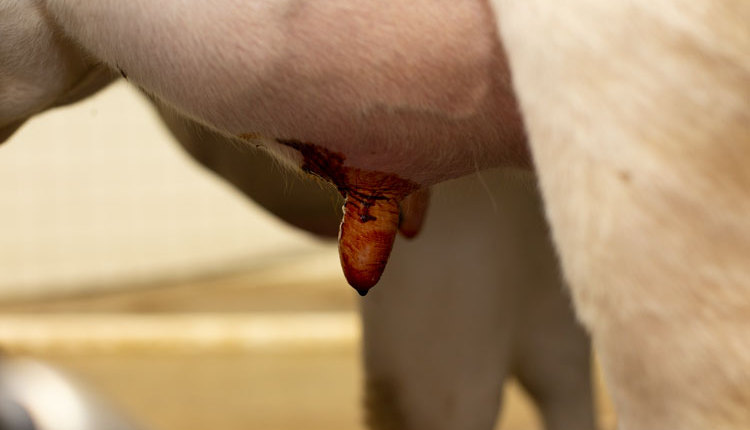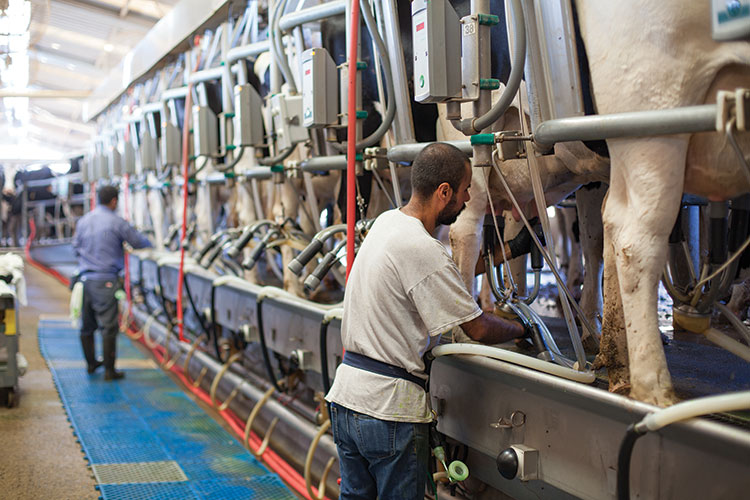
Parlor employees have their own skills and personalities. Each needs to know the importance of their work and how they contribute to the success of the business operation.
“The first and most important step is for the manager to explain what is required of the parlor employees, in a way that they can relate to,” said Glyn Sanders of Cederberg Dairy in Ramona, S.D. “We always stick to the same routine. We encourage everyone to work as a team.”
Dairy owners and managers need to develop new skills and procedures to effectively lead a reliable workforce. As we move from managing cows to managing employees, these skills and procedure development become critical to create an effective team environment. From staff training to goal setting, dairy producers must incorporate effective communication to have a successful operation.
Success starts with training and communicating the operation’s goals and objectives. A dairy’s training plan should detail the farm’s goals and a strategy for monitoring and achieving them. Also include specifics of when these goals need to be updated or reset. Common goals include milk quality benchmarks, production per cow, and net income.
Five-step training
South Dakota State University extension published a five-step training guide for dairies, “Human Resource Management on Modern Dairies” and focuses on the importance of communication with new employees. The steps are:
1. Prepare. Acquire and arrange needed material. Create a relaxed environment where you will not be interrupted. Describe to the employee the context and importance of the task, as well as what you are about to do.
2. Tell. Clearly, slowly, and carefully tell the learner how to do the task. Explain why each step is needed and why it is important to be done a specific way.
3. Show. Show the employee how the task is to be performed. Encourage questions and reinforce why the task is completed the way it is.
4. Do. Let the learner do the task. Have the employee repeat the steps just demonstrated. Provide some notes or a checklist to help the employee remember each step. Coach the employee; make suggestions and answer questions as needed.
5. Review. After leaving the employee to perform the task independently, check back to see that the employee is completing it correctly. Provide quality feedback that reinforces the correct steps and redirects those not yet performed properly. Be open to the possibility of repeating the Show and Do steps.
Employed in practice
Bernie Bakker of Rock Bottom Dairy in Lester, Iowa, uses a similar approach on his farm. His instructions to employees detail what needs to be done and why.
“Have clear procedures that are simple and repeatable,” Bakker said. “Make sure expectations are clear and reasonable, and monitor results.” The ability to monitor results directly provides the opportunity for the employee’s manager to provide feedback and develop future training sessions. The old adage rings true: We cannot manage what we do not measure.
Key measures to concentrate on with parlor employees may include: tank level somatic cell counts, bulk tank bacteria counts, pounds of milk harvested per hour and per employee. The way employee responsibilities are divided also plays a crucial role in meeting these measures.
Are we as managers communicating with employees so that they understand the importance of their role and how it affects meeting these specific measurement goals? Managers need to communicate to employees how their specific job responsibilities have a direct effect on achieving milk quality goals.
Parlor managers need to explain the specific milking routine to achieve milk quality goals. The “territorial model” for parlor employees is very common in large dairy operations. In this model, an employee is responsible for the cow prep and milking of a set number of stalls or territory. This employee is trained to do each step of the prep procedure to each cow in his territory.
The steps vary from farm to farm, but usually are: wipe, dip, strip, dry, and then attach the unit for the most effective milk let-down so cows milk out quickly. The time it takes to dip and strip is very beneficial for both milk quality, as well as stimulation to improve milk let-down.
Milking routine procedures are only as good as the training and adherence by parlor employees, which often is due to their understanding of how their role directly influences meeting milk quality goals.
With a good ongoing training program, dairy producers can help their employees see what success looks like, and they may begin to invest more of themselves in the operation.
Be a listener
Good communication starts by being a good listener. This ultimately allows employees to openly share ideas during training sessions. This two-way communication helps build a stronger relationship between manager and employees. Employee ideas can have a direct positive influence on the adoption and achievement of the operation’s milk quality goals.
“We have found it extremely beneficial if the employee can be encouraged to come up with a solution to any problem themselves, rather than just be told what to do,” Sanders said. “It works better if it is their idea!”
Some dairies provide employees monetary incentives to encourage buy-in and improvement. Others hand out compliments or pats on the back. Sincere appreciation for a job well done can be just as rewarding to an employee as a monetary award. Both approaches can be effective to manage employees, while continually looking for where improvements need to be made.
“Employees need to know it is a total team effort, not just a personal effort,” Bakker said. “Employees need to understand the importance of their role in the success of the dairy.”
Just as relaxed cows produce more milk, well-trained and engaged employees do better work. This leads to higher morale, lower staff turnover, meeting operational goals, and proving that the success of a dairy farm is directly related to effective communication with employees.
Communication shows “mutual respect between employers and employees and their needs,” summed up Rein Landman of Linde Dairy in White, S.D.
